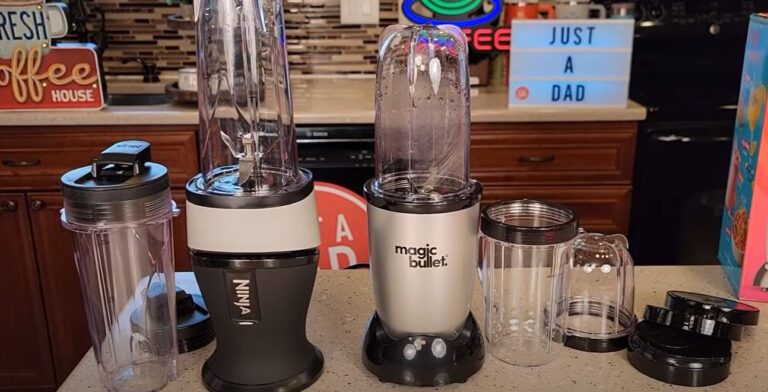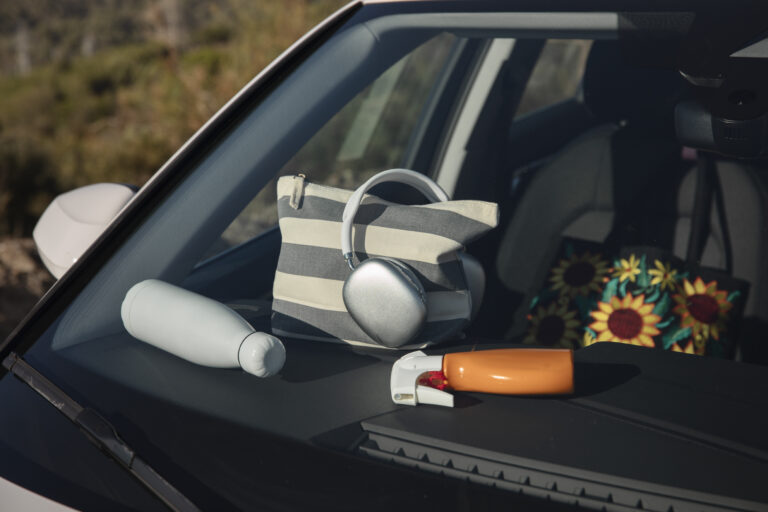5 Best Kids Noise Cancelling Headphones in 2025
It’s a fact of modern life: our kids are surrounded by noise. From the constant chatter of a busy home to the roar of a jet on a family vacation, noise is everywhere. While we can’t eliminate the noise, we can protect our children’s ears from it.
This is where a good pair of kids’ noise-canceling headphones comes in. They’re more than just a gadget for listening to music; they’re a tool for their well-being, helping them focus on homework, stay calm on a trip, or simply find a moment of quiet in a loud environment.
We’ve tested a variety of headphones to find the best options on the market. In this guide, we’ll review the top five choices, all designed with three core principles in mind: comfort, safety, and effective noise reduction.
5 Best Kids’ Noise-Cancelling Headphones (Detailed Review)
Here is a comprehensive, detailed breakdown of the five best noise-canceling headphones for children, exploring the nuances of each model’s design, performance, and real-world application.
1. Puro Sound Labs PuroQuiet Plus

- Intro: The PuroQuiet Plus is widely considered the gold standard for children’s headphones, particularly for its rigorous focus on hearing protection through both best-in-class Active Noise Cancellation (ANC) and a reliable volume-limiting system. This is a premium option for parents who refuse to compromise on their child’s auditory health.
- Specifications:
- Noise Cancellation: Features robust Active Noise Cancellation (ANC) that reduces ambient noise by up to 22 dB. This is combined with a high degree of passive noise isolation (78% at 1 kHz) from the cushioned ear cups, creating a powerful defense against background sounds.
- Volume Limit: The volume is strictly and automatically capped at 85 dB. This is achieved through intelligent digital signal processing that limits the output imperceptibly, ensuring the listener never feels the need to turn it up.
- Battery Life: Impressive battery life, providing up to 23 hours of playtime with ANC enabled and extending to a remarkable 35 hours with ANC turned off. This makes them ideal for multiple long trips or a full week of school use on a single charge.
- Connectivity: Utilizes Bluetooth 5.0 for a stable wireless connection up to 30 feet. They also include a 3.5mm wired cable with an in-line microphone, offering a convenient backup for devices without Bluetooth or for continued use when the battery is depleted.
- Extras: Comes with a durable hard travel case to protect the investment, a USB-C charging cable, and a unique daisy chain cable that allows two Puro headphones to share audio from one device.
- My Experience: The ANC is the star feature here. On a long-haul flight, the persistent drone of the jet engine was noticeably reduced, allowing my child to relax and fall asleep. For a child with sensory sensitivities, this level of noise cancellation is a godsend, creating a peaceful bubble in otherwise overwhelming environments. The headphones are lightweight and the earcups are soft, providing good comfort for hours. The 85 dB volume limit provides genuine peace of mind, as you never have to worry about the volume being too high.
- Pros:
- Unrivaled ANC for the kids’ headphone market.
- Strict, safe, and reliable 85 dB volume limiter.
- Long-lasting battery.
- Robust build quality and included hard case for superior durability and protection.
- Cons:
- Higher price point compared to competitors.
- The on-ear design, while comfortable, may not be as universally comfortable as over-ear models for all children.
- Best For: Parents who prioritize the absolute best in hearing protection and effective noise-cancellation for long-distance travel, noisy public spaces, and children with special needs.
2. JBL JR 460NC

- Intro: The JBL JR 460NC brings the trusted audio quality of a major brand to a kid-focused design. It offers a strong, all-around feature set with reliable ANC, making it a powerful and versatile choice for daily use.
- Specifications:
- Noise Cancellation: Features Active Noise Cancellation (ANC) that effectively muffles low-frequency background noise.
- Volume Limit: Safely caps volume below 85 dB with JBL’s “Safe Sound” technology.
- Battery Life: Delivers up to 20 hours of playtime with ANC on, and an impressive 30 hours with ANC off. A quick two-hour charge gets them back to full power.
- Connectivity: Supports Bluetooth 5.0 and offers a multi-point connection, which allows the headphones to be paired with two devices simultaneously—a convenient feature for a child switching between a tablet and a phone. It also includes a detachable wired cable.
- Extras: Built-in microphone for calls or online learning, simple controls, and a foldable design.
- My Experience: The JBL JR 460NC excels in everyday scenarios. The ANC is perfect for toning down the sounds of a busy kitchen during homework time or for reducing the drone of a car on a road trip. The controls are intuitive, which allows my child to manage their own music or video playback without constant parental assistance. The headphones are lightweight and comfortable, making them a go-to for school and daily use. The overall sound quality is well-tuned for a younger audience, with a hint of boosted bass that still respects the volume limits.
- Pros:
- Reputable brand with reliable quality.
- Good battery life and quick charging.
- Multi-point connection is a very useful feature.
- Foldable design for portability.
- Cons:
- The ANC, while effective, is not as powerful as the PuroQuiet Plus in very loud environments.
- Some online reviews report issues with the durability of the plastic headband over time, so they may not be the best choice for very rough handling.
- Best For: Everyday use, online classes, and general travel where a good balance of features, brand reliability, and comfort is a priority.
3. BuddyPhones Cosmos+

- Intro: The BuddyPhones Cosmos+ is a highly adaptable and feature-rich headphone designed to grow with a child’s needs. Its biggest selling point is its multiple listening modes and a detachable microphone, making it perfect for a wide range of activities.
- Specifications:
- Noise Cancellation: Includes Active Noise Cancellation (ANC).
- Volume Limit: Offers three selectable SafeAudio™ modes: 75 dB (Toddler Mode), 85 dB (Kids Mode), and 94 dB (Travel Mode). This allows parents to manually adjust the volume cap based on the child’s age or environment.
- Battery Life: Provides up to 24 hours of playtime.
- Connectivity: Supports Bluetooth and comes with a wired cable.
- Extras: Features a detachable boom microphone for crystal-clear voice capture, a “StudyMode” that enhances speech frequencies to improve clarity, and a BuddyLink for audio sharing.
- My Experience: The different listening modes are incredibly practical. The 75 dB “Toddler Mode” is great for very young children who are just getting used to headphones. The 85 dB “Kids Mode” is the standard for most situations. The “Travel Mode” at 94 dB is an excellent option for planes or loud cars where a little extra volume is needed to overcome ambient noise, though it’s crucial to use this sparingly. The detachable boom mic is a fantastic addition for online school or video chats, providing significantly better clarity than a built-in mic.
- Pros:
- Versatile with three different volume-limiting modes.
- Dedicated “StudyMode” is a brilliant feature for remote learning.
- Detachable boom microphone provides superior voice quality.
- BuddyLink allows for easy audio sharing between multiple headphones.
- Cons:
- The ANC is solid but not as powerful as top-tier models.
- Switching between modes can be a little tricky for younger children.
- The 94 dB “Travel Mode” can exceed safe listening recommendations for extended use.
- Best For: Kids who need a multi-functional headphone for online schooling, gaming, and travel. Excellent for families who want a product that offers flexible parental control.
4. LilGadgets Untangled Pro

- Intro: The LilGadgets Untangled Pro is a popular choice for its durable build and unique “SharePort” technology, which simplifies audio sharing for siblings and friends. This headphone relies on passive noise isolation through its design rather than active noise cancellation.
- Specifications:
- Noise Cancellation: Passive Noise Isolation, which uses a snug fit and cushioned ear cups to physically block out external sound. It does not have ANC technology.
- Volume Limit: Automatically limited to 93 dB. While this is higher than the recommended 85 dB, it’s still a significant safety feature compared to unlimited adult headphones.
- Battery Life: Approximately 12 hours of wireless listening.
- Connectivity: Uses Bluetooth 4.0 and includes a durable braided wired cable.
- Extras: Features the patented “SharePort” on one earcup, a built-in microphone, and a collapsible design.
- My Experience: The “SharePort” feature is an absolute game-changer for car rides. The ability to connect multiple headphones to a single device without a bulky splitter is incredibly convenient and a huge selling point. The headphones feel extremely sturdy and flexible, designed to withstand the inevitable rough handling by children. While they don’t have ANC, the passive isolation from the earcup pads does a decent job of muffling some higher-frequency sounds like voices. The sound quality is surprisingly good for a kid’s headphone, with a full, rich sound.
- Pros:
- SharePort technology is a unique and incredibly useful feature.
- Highly durable and flexible construction.
- Good sound quality for its price range.
- Microfiber travel pouch is a nice addition.
- Cons:
- Lacks ANC, which may not be sufficient for very noisy environments like airplanes.
- The 93 dB volume limit is higher than the recommended safety standard, so it’s best for shorter listening sessions.
- The battery life is shorter than some competitors.
- Best For: Families with multiple children, younger kids who are tough on their gadgets, and those who need a simple, durable, and shareable wireless solution for car rides and daily use.
5. Snuggly Rascals

- Intro: Snuggly Rascals offer a completely different, comfort-focused approach to kids’ headphones. Designed as a soft fleece headband with integrated flat speakers, they are ideal for toddlers and children who find traditional over-ear headphones uncomfortable or constricting.
- Specifications:
- Noise Cancellation: Primarily Passive Noise Isolation from the soft, thick fleece material.
- Volume Limit: Capped at 90 dB.
- Battery Life: N/A (wired only).
- Connectivity: Wired, with a standard 3.5mm audio jack.
- Extras: Machine-washable headband with removable speakers and a variety of fun, character-based designs.
- My Experience: My experience with Snuggly Rascals was purely focused on comfort and ease of use for a toddler. The headband is incredibly soft and lightweight, making it perfect for a child who hates anything on their ears. They’re excellent for quiet-time activities like watching a tablet on a couch or on a car seat. The flat speakers don’t press on the ears, and the design means they can be worn while a child is lying down or sleeping. The passive noise isolation is decent for muffling a bit of background noise, but they are not a replacement for true ANC in loud environments. The ability to toss the headband in the wash is a game-changer for hygiene.
- Pros:
- Unparalleled comfort, especially for young children or sensitive ears.
- Safe for use while a child is lying down.
- Machine washable for easy cleaning.
- Fun designs that make kids excited to wear them.
- Cons:
- Lacks any form of Active Noise Cancellation.
- Wired-only design can be limiting.
- The 90 dB volume limit is higher than the recommended standard.
- Best For: Toddlers and young children who are resistant to traditional headphones, for use during sleep or quiet, sedentary activities, and for children with sensory sensitivities to pressure on their ears
Why Kids Need Noise-Cancelling Headphones
In a world that seems to get louder every day, the noise-canceling headphone has evolved from a luxury gadget for travelers into an essential tool for all ages, particularly children. For kids, these headphones are about more than just listening to music—they are a form of hearing protection, a learning aid, and a comfort device. Understanding the diverse benefits of this technology is key for any parent or caregiver.
1. Hearing Protection: Preventing Long-Term Damage
A child’s ears are much more sensitive than an adult’s and are still developing. Prolonged exposure to loud noises can cause irreversible hearing loss. From busy city streets and crowded public places to loud events like fireworks and concerts, children’s ears are constantly at risk. Noise-canceling headphones help to mitigate this danger in a crucial way: by reducing ambient noise, they eliminate the need for a child to turn up the volume to dangerous levels to hear their audio. This means your child can listen at a lower, safer volume (the standard for kids’ headphones is 85 decibels or lower) without being tempted to crank it up to drown out the world around them.
2. Concentration & Learning: A Tool for Focus
In today’s connected world, children often need to focus on homework or participate in online classes in environments with competing sounds—siblings playing, a television in the background, or construction noise outside. Noise-canceling headphones create a personal “quiet zone” that blocks out these auditory distractions. This can dramatically improve a child’s ability to concentrate, absorb information, and complete tasks with greater efficiency. For students who may be easily distracted, these headphones are an invaluable tool to help them stay on task and succeed academically.
3. Travel & Comfort: Soothing the Chaos of a Journey
Traveling with kids can be a stressful experience, especially on long flights, train rides, or road trips. The constant drone of an airplane engine, the chatter of fellow passengers, or the general hubbub of a busy terminal can be overwhelming for a child. Noise-canceling headphones provide a peaceful escape from this sensory overload, making travel more manageable and comfortable for both the child and the parent. They can listen to a movie or a podcast without disruption, or simply use the noise-cancellation feature to rest or sleep in a noisy environment.
4. Special Needs Support: For Children with Sensory Sensitivity
For many children with sensory processing sensitivities, such as those with autism or ADHD, certain sounds can be painful, overwhelming, or lead to anxiety. Loud and unpredictable noises can trigger a sensory overload, making it difficult for them to function in public spaces or even at home. Sensory-friendly headphones offer a safe haven by dampening overwhelming sounds, allowing these children to feel calm and secure in a variety of settings. This gives them the freedom to participate in activities and navigate social situations without the fear of being distressed by their environment.
Buying Guide: What to Look for in Kids’ Noise-Cancelling Headphones
Choosing the right pair of headphones for your child requires careful consideration beyond just color and design. The key is to find a model that balances safety, comfort, and performance.
1. Noise-Cancelling Type: Active vs. Passive
- Passive Noise Isolation uses physical design to block sound. The padded ear cups form a seal around the ear, acting as a physical barrier to prevent external noise from getting in. While effective for higher-frequency sounds like voices, it doesn’t do much for low-frequency hums.
- Active Noise Cancellation (ANC) is a more advanced technology. It uses tiny microphones to “listen” to the outside noise and then generates a sound wave that is the exact opposite of the noise, effectively “canceling” it out. ANC is particularly effective at muting constant, low-frequency sounds like the rumble of a car engine or an airplane. For maximum safety and sound reduction, look for headphones with a good ANC feature.
2. Volume Limiting: The 85 dB Safe Volume Cap
This is arguably the single most important feature. The World Health Organization (WHO) recommends a maximum safe listening level of 85 decibels (dB) for children to prevent long-term hearing damage. A good pair of kids’ headphones will have a built-in volume limiter that automatically caps the sound at or below this level, providing an essential safeguard against a child accidentally turning the volume up too high.
3. Comfort & Fit: Designed for Smaller Heads
Children’s headphones should be specifically designed for their smaller heads and ears. Look for:
- Adjustable Headbands: A headband that can be easily adjusted will ensure a snug but not too tight fit and will allow the headphones to grow with your child.
- Cushioned Ear Cups: Soft, padded ear cups are crucial for comfort, especially during extended use on long trips. They should be lightweight to prevent strain.
4. Durability: Built to Last
Kids are tough on their belongings. The best headphones for them are made from flexible, durable materials that can withstand being bent, twisted, and dropped without breaking. Look for models with reinforced joints and cables that are designed to endure rough handling.
5. Connectivity & Battery Life
- Bluetooth and Wired Options: Most modern kids’ headphones offer Bluetooth connectivity for wireless freedom. Some also include a detachable audio cable, which is useful for connecting to devices without Bluetooth or for in-flight entertainment systems.
- Battery Life: For wireless headphones, check the battery life. A good pair should last for at least 15-20 hours on a single charge to get through long trips or multiple days of use.
6. Extra Features
Consider additional features that may be useful for your family:
- Foldable Design: A foldable design makes the headphones easy to pack into a bag or backpack.
- Travel Case: A protective case can help keep the headphones safe from damage while on the go.
- Built-in Microphone: A microphone is essential for online schooling, video calls, or talking on the phone.
Comparison Table
6. FAQs About Kids’ Noise-Cancelling Headphones
Are noise-canceling headphones safe for kids?
Yes, well-designed noise-canceling headphones are not only safe but are an important tool for protecting a child’s hearing. The key safety feature to look for is a built-in volume limiter that caps the sound at or below the recommended 85-decibel (dB) safe volume cap. This prevents a child from turning the volume up to dangerous levels, which is the primary cause of long-term hearing damage from headphone use. By reducing background noise, active noise-canceling headphones allow a child to listen to audio at a much lower, safer volume.
What is the ideal age for children to start using them?
While there is no single “ideal age,” most kids’ headphones are designed for children aged 3 and up. The primary factors to consider are a child’s maturity and their ability to keep the headphones on. For toddlers and preschoolers (ages 3-5), soft headband-style headphones like the Snuggly Rascals are often a better fit. School-age children (ages 6+) are generally ready for traditional on-ear or over-ear models, particularly those with a foldable design and durable construction.
Do all kids’ headphones have volume limiting?
No, not all headphones marketed for kids have a volume limiter. This is a crucial distinction. Some simply have a smaller size and a kid-friendly design. It is essential to read the product specifications to confirm that the headphones feature a fixed volume cap, typically at 85 dB. Buying a product specifically from a reputable brand that prioritizes this safety feature is highly recommended.
Can they help kids with autism or ADHD?
Yes, absolutely. For many children with autism or ADHD, loud and unpredictable noises can lead to sensory overload, anxiety, or an inability to focus. Noise-canceling headphones, particularly those with strong Active Noise Cancellation, can serve as an invaluable sensory tool. They create a quiet, predictable environment that can help a child feel calmer, reduce stress, and improve their ability to concentrate in distracting settings like a classroom, a crowded store, or public transportation.
How long does the battery last for wireless models?
The battery life for wireless kids’ headphones varies significantly by model and usage. A good-quality pair with Active Noise Cancellation (ANC) typically lasts between 15 and 25 hours on a single charge. Headphones without ANC can last even longer, often 30 hours or more. Factors like the volume level and the use of extra features (like LED lights) can also affect battery life. For travel, it is always a good idea to choose a model with a long battery life or one that includes a wired backup option.
Conclusion
In a world that seems to get louder by the day, protecting a child’s hearing is no longer an afterthoughtit’s a necessity.
From the constant hum of a plane engine to the chatter of a busy classroom, kids’ ears are constantly exposed to noise that can be overwhelming and, over time, harmful.
As we’ve seen, the right pair of kids’ noise-canceling headphones is a crucial piece of modern audio gear, offering a blend of safety, comfort, and functionality.
Choosing the perfect pair means balancing these three pillars. For the family of avid travelers or those with a child with sensory sensitivities, a model with top-tier Active Noise Cancellation like the Puro Sound Labs PuroQuiet Plus is an essential investment.
If you’re looking for a versatile and budget-friendly option that works well for both online schooling and quick trips, the JBL JR 460NC provides a fantastic blend of features and value.
Finally, for toddlers or kids who find traditional headphones uncomfortable, the Snuggly Rascals offer a unique, safe, and soft solution that prioritizes comfort above all else.
Ultimately, your choice in child-safe technology should empower your child to navigate their world with confidence. By choosing headphones that have a safe volume cap, offer effective noise reduction, and are comfortable to wear, you are giving them a tool that helps them stay safe, focused, and comfortable in any environment.





